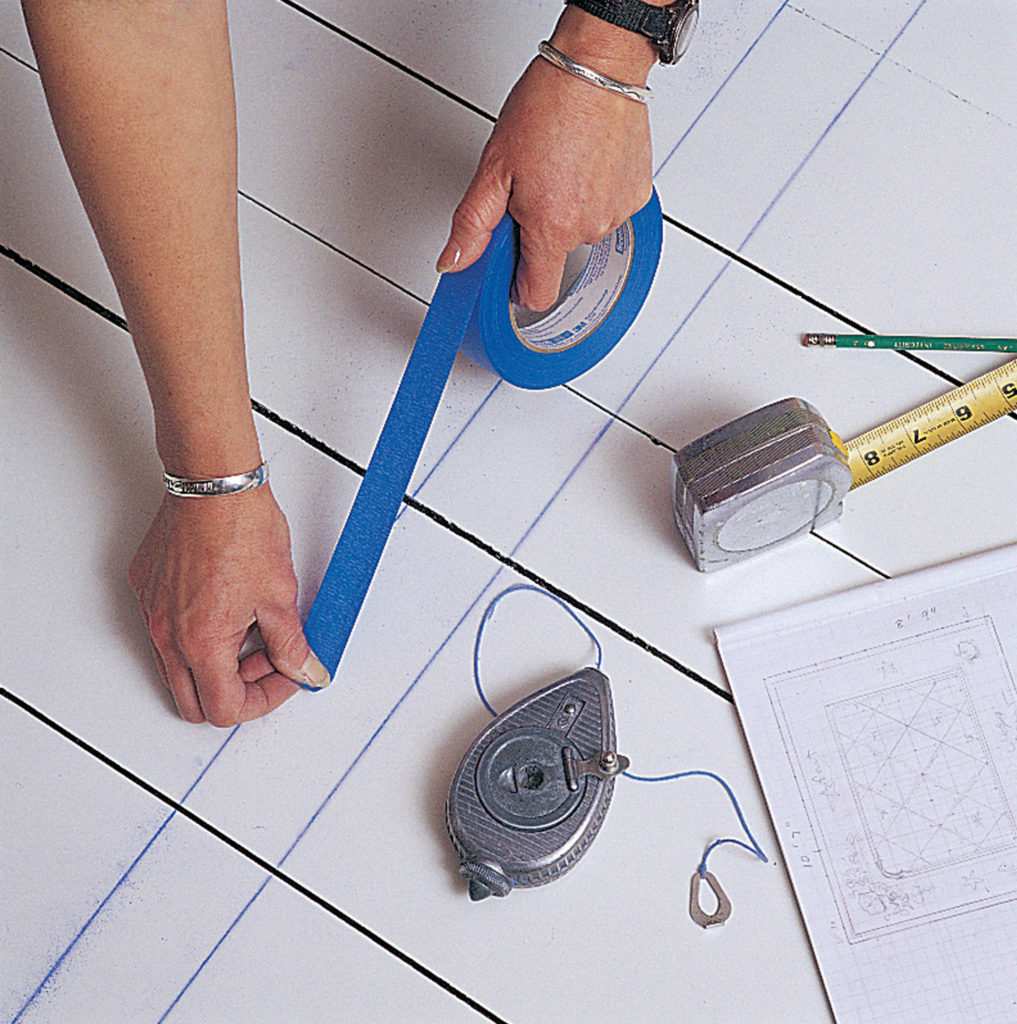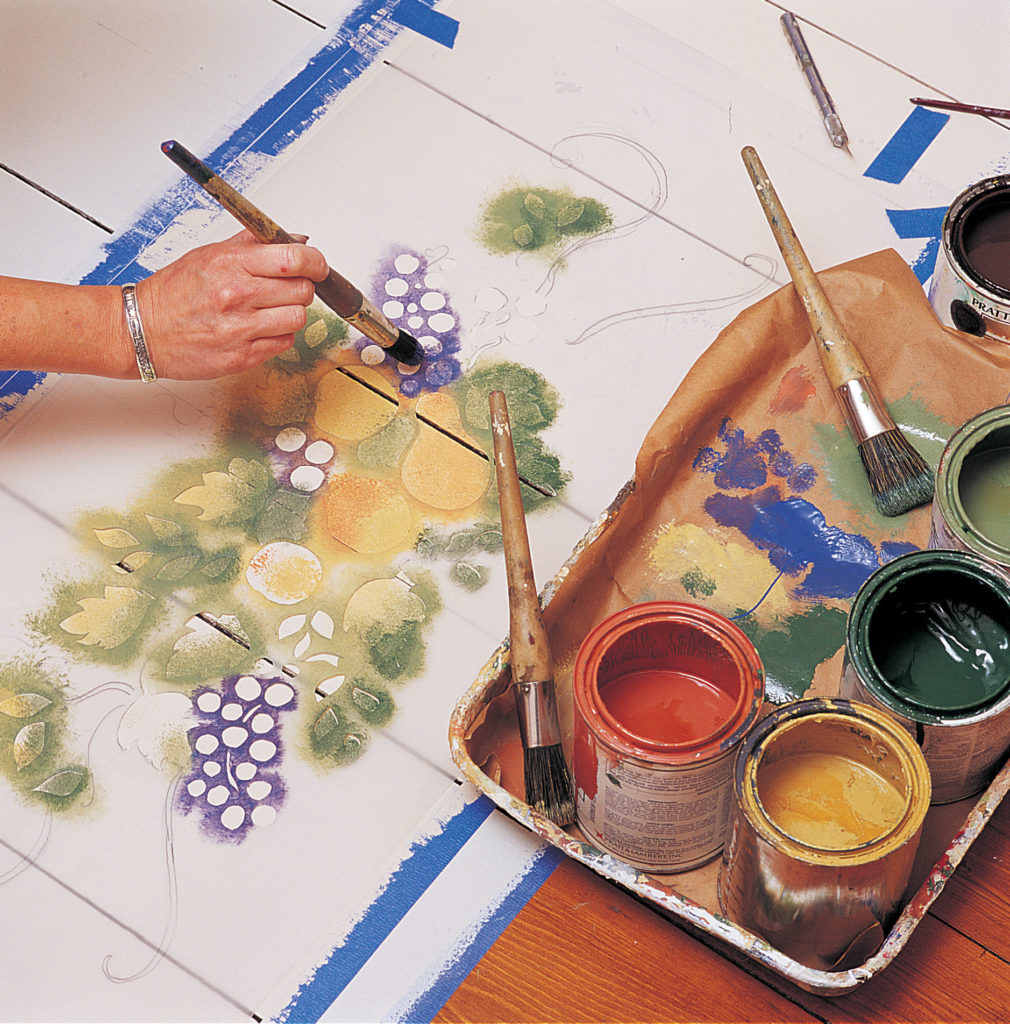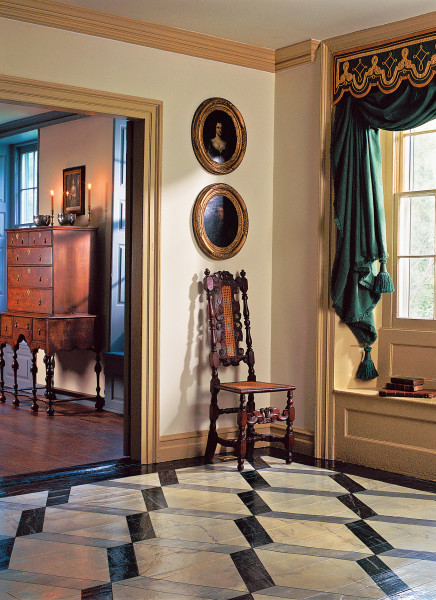
This historic faux marble treatment is quite formal.
Photo: Geoffrey Gross, courtesy of Rizzoli
The owner of the Vermont farmhouse used paint with bold abandon. (See walls and furniture in the previous article.) About the only thing she didn’t paint, in fact, were the floors, left natural to tie the colorful rooms together. Painted floors have a long tradition, dating from about the mid-1700s and well into the 19th century, and usually are associated with early American and rural houses. The geometric effects, though, are sophisticated enough for a 20th-century Colonial Revival entry hall.
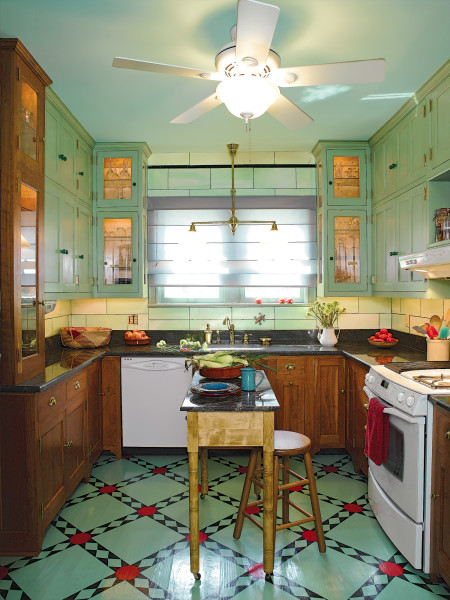
Colors in a hand-painted floor were cued by the original jadeite-green glass wall tiles.
Photo: Leslie Tomlin
Painted floors were most common in New England, but originals have shown up in the Midwest and Texas, too. Plain painted floors were common in farmhouse kitchens. In fine Federal-era and Greek Revival homes, decorative-painting and faux-finishing techniques were used to suggest floors of inlaid wood or marble tiles. Checkerboards, spatter-painting, pinstriped borders, stencil decoration, compass designs, and trompe l’oeil “rugs” are historical conventions—painted directly on the floorboards, or alternatively on canvas floorcloths. More recently, decorative painters have revived the tradition, using all the traditional methods as well as freehand painting.
The checkerboard is an ancient design for floors. Traditional embellishments include marbleizing, which in black and white was popular for formal entry halls by the mid-19th century. Putting the squares on a diagonal is a classic twist; better jobs would include a border. Imitating other materials—faux painting—may have begun for reasons of practicality or budget, but graining and marbleizing became an art form. Compass rose designs in imitation of expensive wood inlays grew artistic and elaborate. Stenciled and freehand motifs could come from anywhere: decorator’s pattern books, fabric, even a botanical specimen.
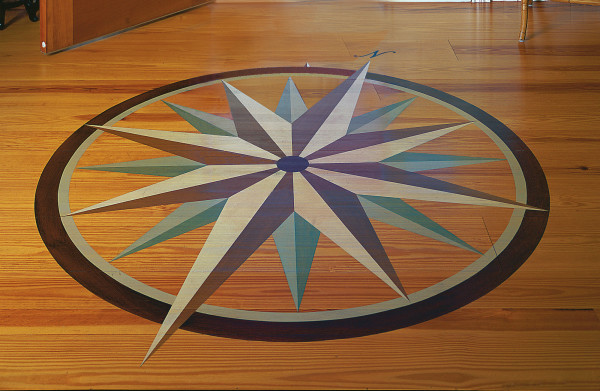
For a compass rose, paint reproduces the look of inlaid wood species. (Artist Susan Amons: susanamons.com)
Photo: Sandy Agrafiotis
Common colors included Indian red, grey, brown, and green. Yellow ochre was favored for hiding dust and pollen. Pale blue and even white were occasionally found in New England in the late 1700s. The sheer variety of colors, designs, motifs, and techniques offers a wonderful precedent for your imagination.
Prep & Paint Floors
For the design, first, narrow the possibilities. What is the look: plain, faux stone, a rug? Which techniques do you prefer: stenciling, marbling, striping, freehand? Work out the size and design, eventually drawing it to scale and choosing colors.
Do invest in knee pads for this work! Stripping, cleaning and filling cracks, and caulking directions would take another article, so here we’ll assume the floor is sound. Power-sand the floor, then sponge-wash it with a degreaser like SpicNSpan or TSP; dry with absorbent towels and let it air-dry thoroughly. Use a primer if you have concerns about adhesion, or to lay down deep color. When it’s dry, apply the ground color. A good trick: roll the ground coat for efficiency, and immediately brush the wet paint for a traditional finish. Interior alkyd is preferred for the ground coats. Milk paint, either casein-based or in a modern formulation, lends earthy color and
a matte finish perfect for old houses.
Measure the floor and lay out your design in chalk. Snap chalk lines to mark straight lines. Edges and stripes are marked in painter’s blue masking tape. Because you can’t paint adjacent to a section that’s still wet, carefully plan your paint-decorating sessions in advance. Stenciling comes before freehand if you’re doing both.
When the paint is thoroughly dry, apply three thin coats of a compatible satin- or matte-finish polyurethane, according to label directions.



